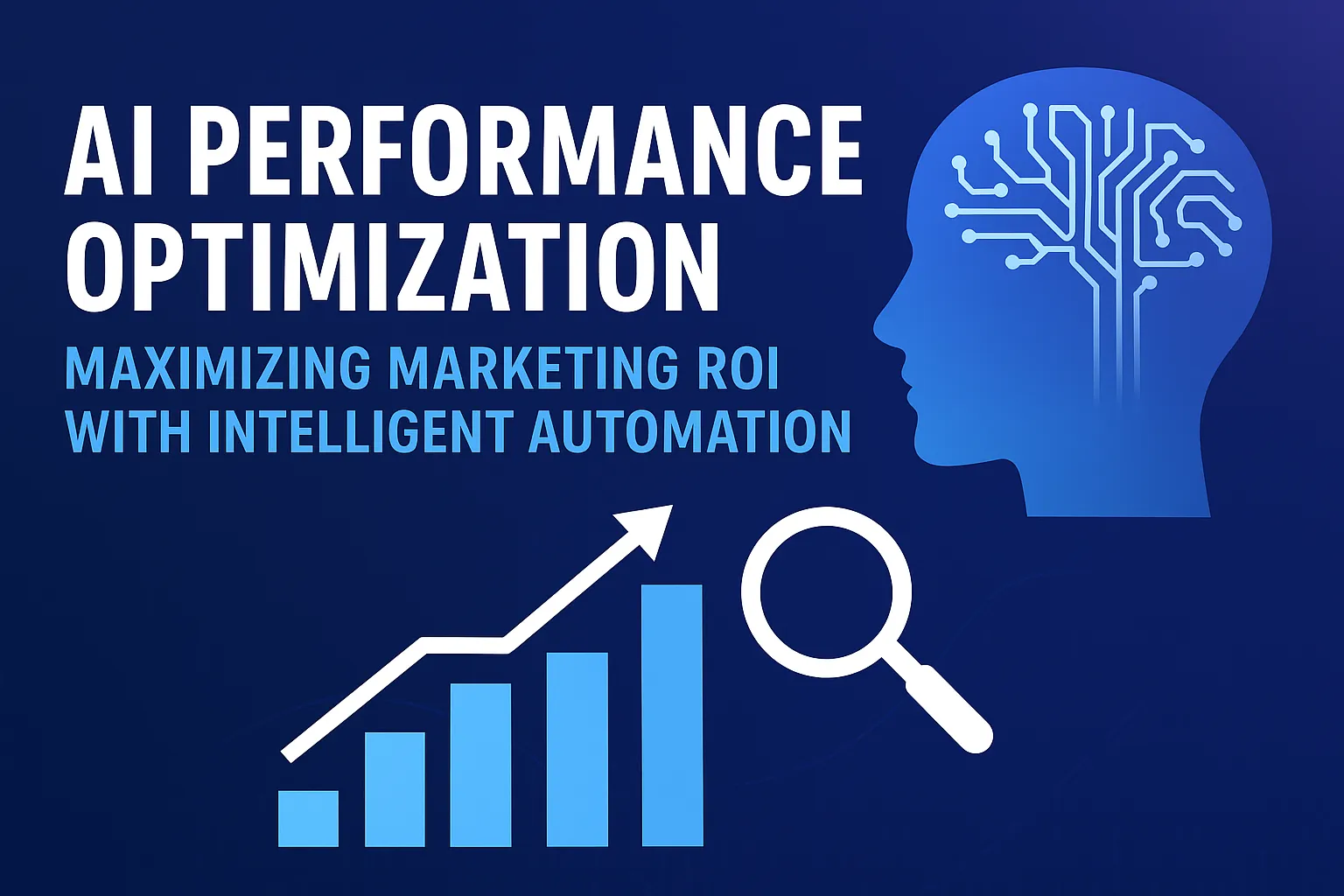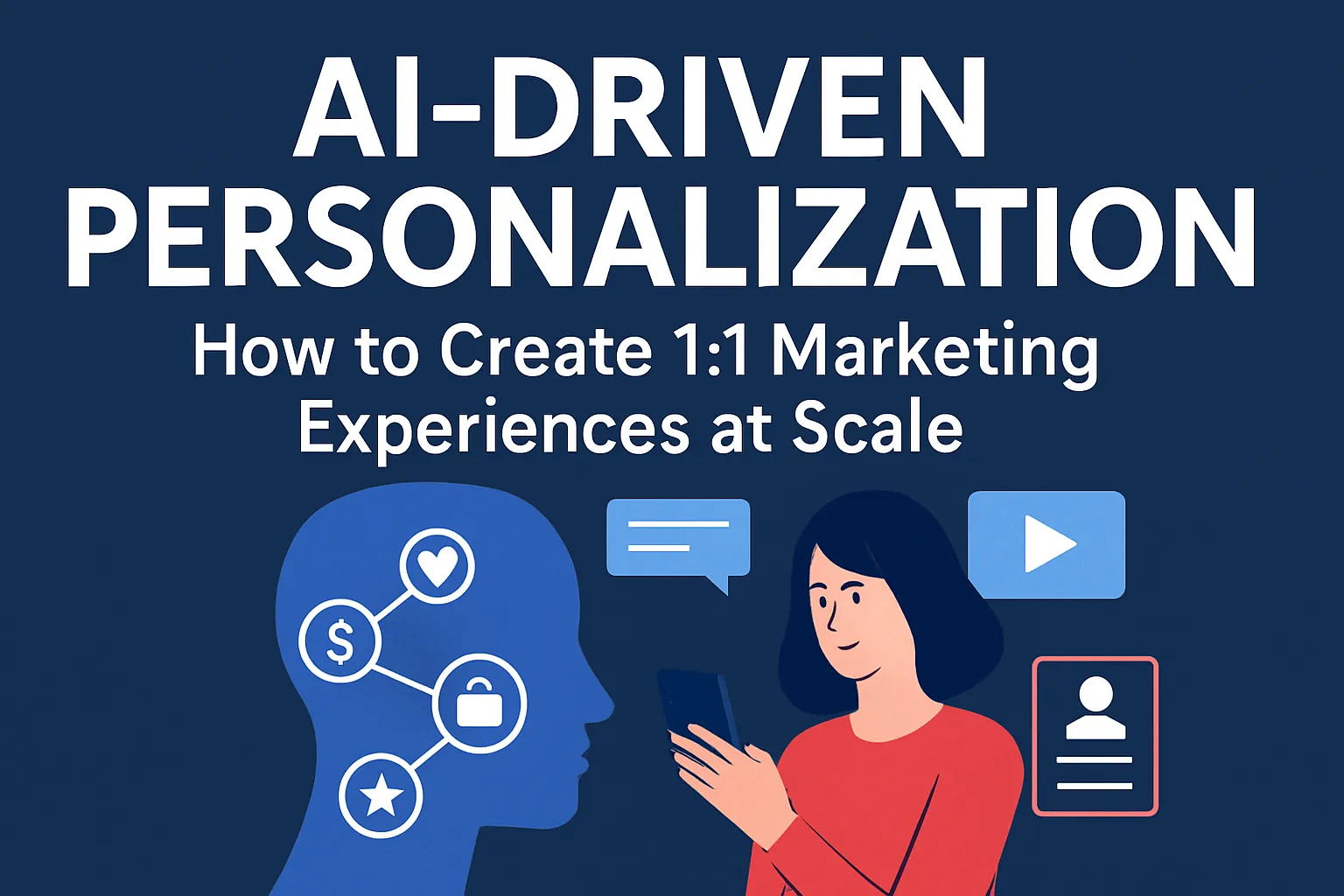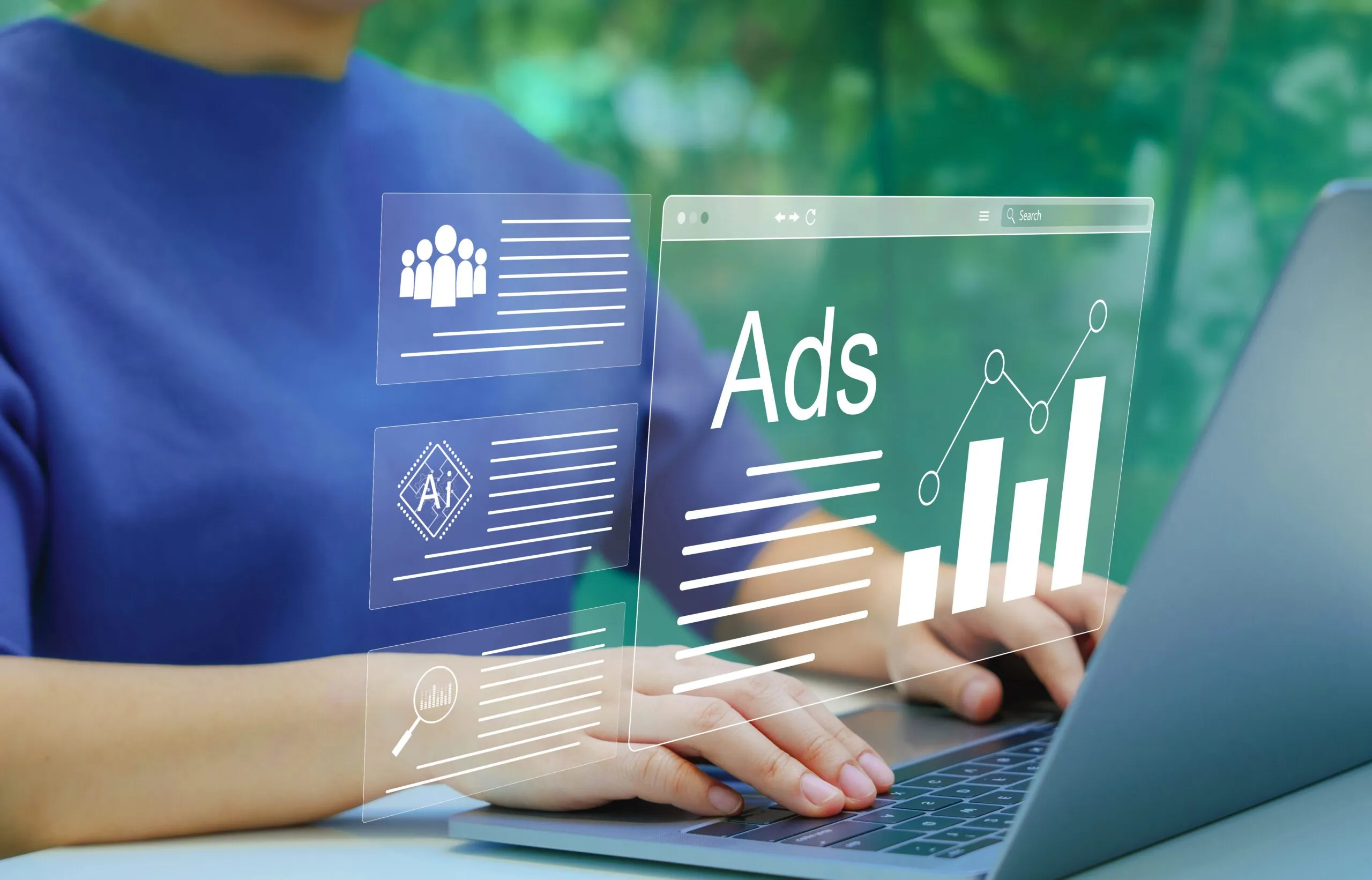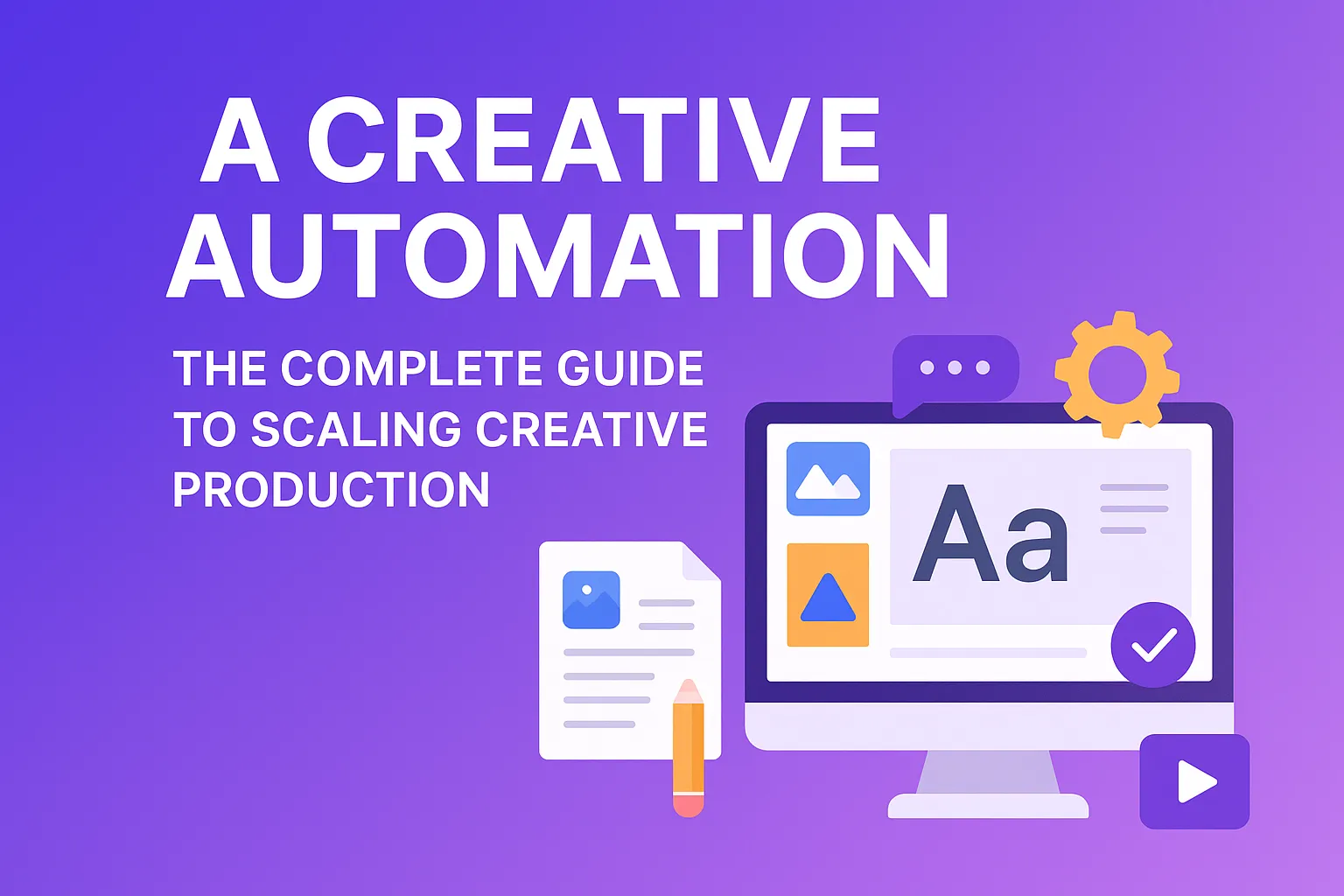AI Performance Optimization: Maximizing Marketing ROI with Intelligent Automation
The marketing landscape is more competitive than ever. With ad costs rising and consumer attention spans shrinking, the difference between success and failure often comes down to one thing: optimization. But traditional optimization methods—manual A/B testing, gut-feeling decisions, and reactive adjustments—are no longer enough.
Enter AI performance optimization: the intelligent automation that transforms marketing from reactive to predictive, delivering unprecedented ROI improvements and sustainable competitive advantages.
The Performance Optimization Challenge
Traditional marketing optimization faces several critical limitations:
- Manual processes that can’t keep up with real-time data
- Limited testing capacity that misses optimization opportunities
- Reactive adjustments that happen after performance has already declined
- Siloed optimization across different channels and campaigns
- Human bias that limits creative and strategic exploration
The result? Suboptimal performance, wasted ad spend, and missed opportunities for growth.
How AI Performance Optimization Works
Real-Time Data Processing
AI performance optimization processes vast amounts of data in real-time, identifying patterns and opportunities that humans would miss.
Data sources:
- Campaign performance metrics across all platforms
- Customer behavior and engagement data
- Market trends and competitive intelligence
- External factors like seasonality and events
- Cross-channel attribution and journey data
Predictive Analytics
Instead of reacting to past performance, AI predicts future outcomes and optimizes accordingly.
Predictive capabilities:
- Performance forecasting: Predicting campaign performance before launch
- Churn prediction: Identifying customers likely to stop engaging
- Lifetime value prediction: Optimizing for long-term customer value
- Seasonal optimization: Anticipating and preparing for demand changes
Automated Decision Making
AI makes thousands of micro-optimizations every hour, continuously improving performance.
Optimization areas:
- Bid management: Adjusting bids in real-time for maximum efficiency
- Audience targeting: Refining targeting based on performance data
- Creative selection: Choosing the best-performing creatives automatically
- Budget allocation: Distributing budget across campaigns and channels
- Timing optimization: Adjusting when and how often to show ads
Core AI Performance Optimization Strategies
1. Intelligent Bid Management
AI bid management goes beyond simple rule-based bidding to use machine learning for optimal bid decisions.
Advanced techniques:
- Predictive bidding: Using historical data to predict optimal bid amounts
- Cross-platform coordination: Optimizing bids across multiple advertising platforms
- Audience-based bidding: Adjusting bids based on audience value and likelihood to convert
- Time-based optimization: Varying bids based on time of day, day of week, and seasonality
Real-world impact: A SaaS company implemented AI bid management and saw a 45% reduction in cost per acquisition while maintaining the same conversion volume.
2. Dynamic Audience Optimization
AI continuously refines audience targeting based on performance data and predictive modeling.
Optimization methods:
- Lookalike audience expansion: Finding new high-value prospects similar to existing customers
- Exclusion optimization: Removing low-value audience segments automatically
- Behavioral targeting refinement: Adjusting targeting based on user behavior patterns
- Cross-channel audience coordination: Ensuring consistent targeting across platforms
3. Creative Performance Optimization
AI automatically tests and optimizes creative elements to maximize performance.
Creative optimization areas:
- A/B testing at scale: Testing hundreds of creative variations simultaneously
- Element-level optimization: Optimizing individual creative elements (headlines, images, CTAs)
- Platform-specific optimization: Adapting creatives for each platform’s unique characteristics
- Performance-based creative selection: Automatically serving the best-performing creatives
4. Cross-Channel Performance Coordination
AI optimizes performance across all marketing channels, not just individual campaigns.
Coordination strategies:
- Attribution modeling: Understanding the true impact of each touchpoint
- Budget allocation optimization: Distributing budget across channels for maximum ROI
- Sequential messaging: Coordinating messages across the customer journey
- Cross-channel retargeting: Following users across platforms with optimized messaging
Advanced AI Performance Optimization Techniques
1. Predictive Campaign Management
AI predicts campaign performance before launch and optimizes strategy accordingly.
Predictive capabilities:
- Performance forecasting: Predicting campaign outcomes based on historical data
- Risk assessment: Identifying potential performance issues before they occur
- Opportunity identification: Spotting high-potential optimization opportunities
- Resource allocation: Optimizing team and budget allocation based on predicted performance
2. Real-Time Competitive Intelligence
AI monitors competitor activity and adjusts strategy to maintain competitive advantage.
Competitive optimization:
- Competitor ad monitoring: Tracking competitor creative and messaging strategies
- Market share analysis: Understanding competitive positioning and opportunities
- Pricing optimization: Adjusting pricing strategy based on competitive landscape
- Creative differentiation: Ensuring creative stands out from competitors
3. Customer Lifetime Value Optimization
AI optimizes for long-term customer value rather than just immediate conversions.
LTV optimization strategies:
- Value-based bidding: Adjusting bids based on predicted customer lifetime value
- Retention optimization: Focusing on customers likely to have high lifetime value
- Upsell/cross-sell optimization: Identifying opportunities for additional sales
- Churn prevention: Proactively engaging customers at risk of churning
4. Seasonal and Event-Based Optimization
AI anticipates and optimizes for seasonal trends and special events.
Seasonal optimization:
- Demand forecasting: Predicting seasonal demand patterns
- Inventory optimization: Adjusting campaigns based on inventory levels
- Event-based marketing: Optimizing for holidays, sales events, and cultural moments
- Trend integration: Incorporating current trends and cultural movements
Implementing AI Performance Optimization
Phase 1: Data Foundation (Weeks 1-2)
-
Audit your data infrastructure
- Identify all data sources and integration points
- Ensure data quality and consistency
- Set up proper data governance
-
Define success metrics
- Establish clear KPIs for optimization
- Set up proper tracking and attribution
- Create performance dashboards
Phase 2: AI Platform Selection (Weeks 3-4)
-
Choose your AI optimization platform
- Evaluate platforms based on your needs
- Ensure integration with your existing tools
- Test with a pilot campaign
-
Configure optimization rules
- Set up basic optimization parameters
- Define performance thresholds
- Establish safety limits and controls
Phase 3: Campaign Implementation (Weeks 5-6)
-
Start with high-impact campaigns
- Choose campaigns with clear performance metrics
- Begin with basic optimization features
- Monitor performance closely
-
Scale successful strategies
- Expand to additional campaigns
- Increase optimization complexity
- Add new platforms and channels
Phase 4: Advanced Optimization (Ongoing)
-
Implement advanced features
- Predictive analytics
- Cross-channel coordination
- Competitive intelligence
-
Continuous improvement
- Regular performance analysis
- Strategy refinement
- Platform and feature expansion
Measuring AI Performance Optimization Success
Key Performance Indicators
Efficiency metrics:
- Cost per acquisition improvements
- Return on ad spend (ROAS) increases
- Budget utilization optimization
- Time-to-optimization improvements
Performance metrics:
- Conversion rate improvements
- Click-through rate increases
- Engagement rate enhancements
- Revenue per campaign increases
Strategic metrics:
- Market share growth
- Competitive advantage maintenance
- Customer lifetime value improvements
- Brand awareness and consideration increases
Advanced Analytics
Attribution analysis:
- Understanding the true impact of each touchpoint
- Measuring the cumulative effect of optimization
- Identifying the most effective optimization strategies
Predictive accuracy:
- Measuring the accuracy of performance predictions
- Tracking optimization success rates
- Identifying areas for AI improvement
Best Practices for AI Performance Optimization
1. Start with Clear Objectives
Define specific, measurable goals for your AI optimization efforts.
Objective setting:
- Clear KPIs and success metrics
- Realistic timelines and expectations
- Defined success criteria
- Regular goal review and adjustment
2. Maintain Human Oversight
While AI can optimize automatically, human oversight ensures strategic alignment.
Human involvement:
- Regular performance reviews
- Strategic direction and adjustments
- Quality control and validation
- Creative and brand oversight
3. Focus on Long-Term Value
Optimize for sustainable long-term performance, not just short-term gains.
Long-term optimization:
- Customer lifetime value focus
- Brand health considerations
- Market share growth
- Competitive advantage maintenance
4. Continuously Learn and Adapt
Use performance data to continuously improve AI optimization.
Continuous improvement:
- Regular performance analysis
- AI model refinement
- Strategy optimization
- New feature implementation
Common Pitfalls and How to Avoid Them
1. Over-Optimization
Too much optimization can lead to diminishing returns and reduced creativity.
Prevention:
- Set reasonable optimization limits
- Maintain creative diversity
- Balance automation with human input
- Focus on strategic optimization
2. Ignoring Brand Considerations
Optimization that damages brand perception can hurt long-term performance.
Best practices:
- Include brand metrics in optimization
- Maintain brand consistency
- Monitor brand sentiment
- Balance performance with brand health
3. Silos Optimization
Optimizing individual campaigns without considering cross-channel impact.
Solution:
- Implement cross-channel optimization
- Use unified attribution models
- Coordinate optimization across platforms
- Focus on overall business impact
The Future of AI Performance Optimization
Emerging Technologies
Advanced machine learning:
- Deep learning for more accurate predictions
- Reinforcement learning for adaptive optimization
- Federated learning for privacy-preserving optimization
- Quantum computing for complex optimization problems
Enhanced personalization:
- Real-time personalization at scale
- Emotion-based optimization
- Contextual optimization
- Predictive personalization
Preparing for the Future
- Invest in data infrastructure that can support advanced AI capabilities
- Build AI expertise within your marketing team
- Stay updated on new optimization technologies
- Experiment with new approaches as they become available
Getting Started with AI Performance Optimization
AI performance optimization isn’t just about improving metrics—it’s about transforming your entire marketing operation into a data-driven, intelligent system that continuously improves and adapts.
Your next steps:
- Assess your current optimization capabilities
- Identify the biggest optimization opportunities
- Start with a pilot program in one area
- Scale successful strategies across your entire marketing operation
The future of marketing optimization is intelligent, automated, and incredibly effective. With AI performance optimization, you can turn your marketing into a competitive advantage that continuously improves and adapts to changing market conditions.
Ready to transform your marketing performance with AI? Discover how Adomate’s AI optimization platform can help you maximize ROI and achieve sustainable competitive advantages.




